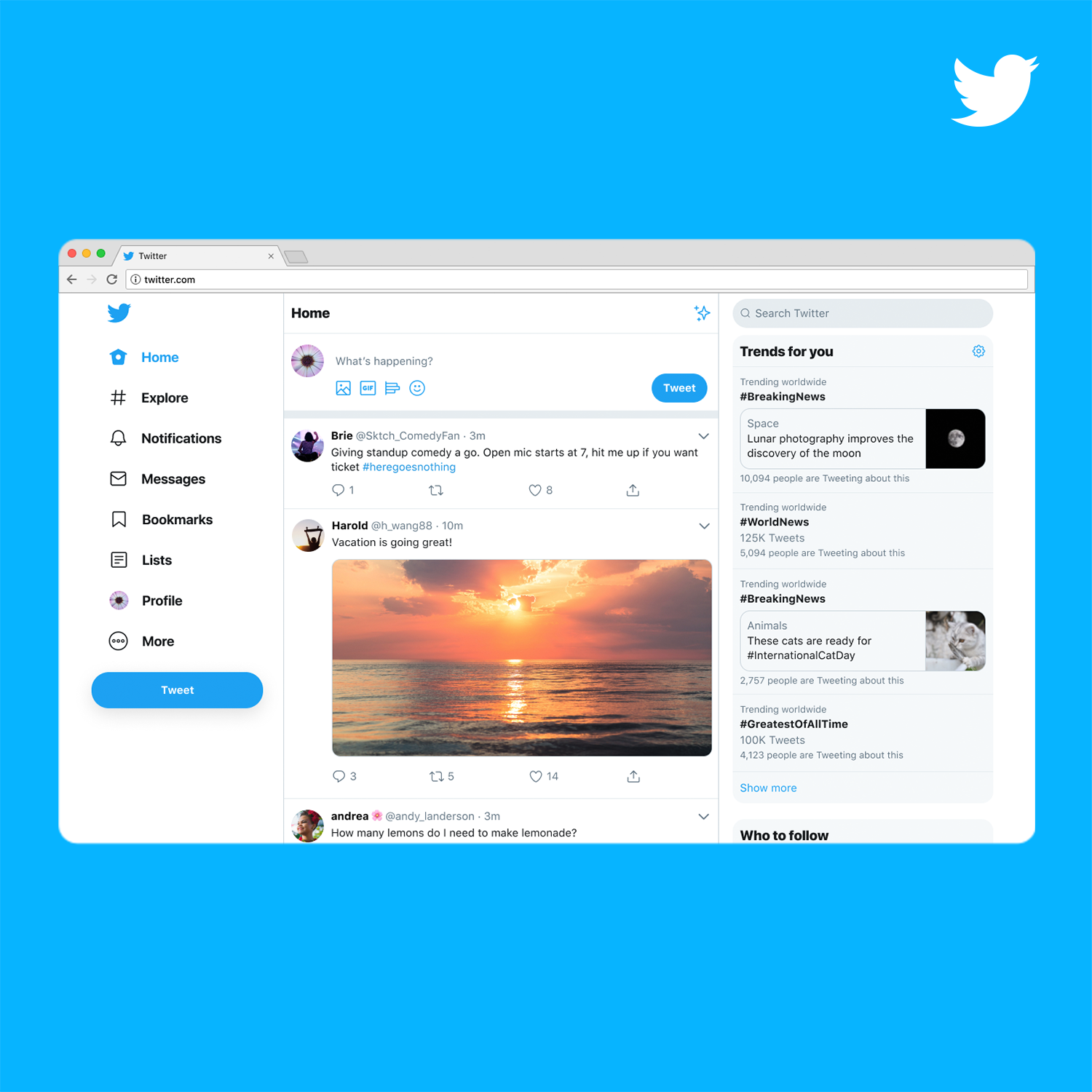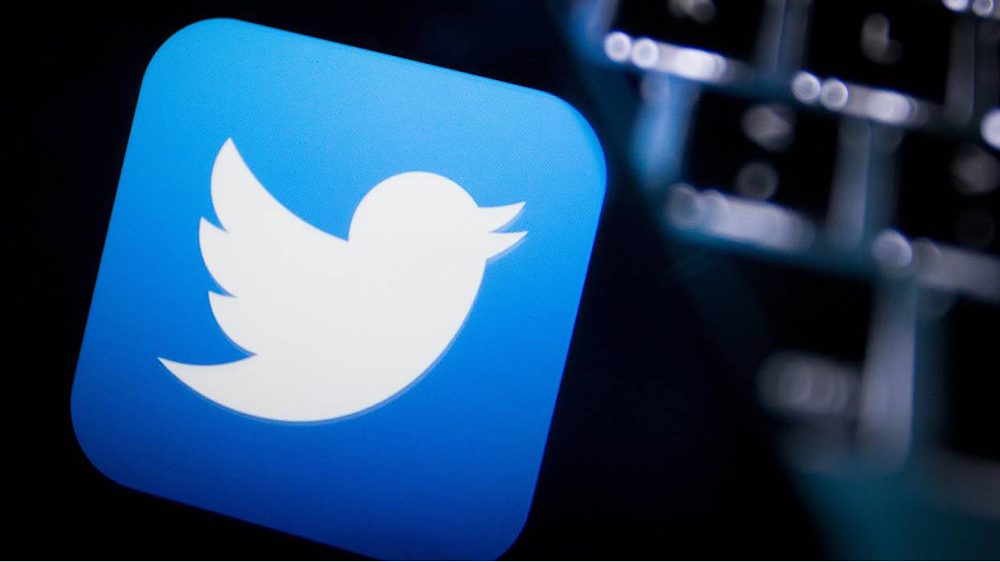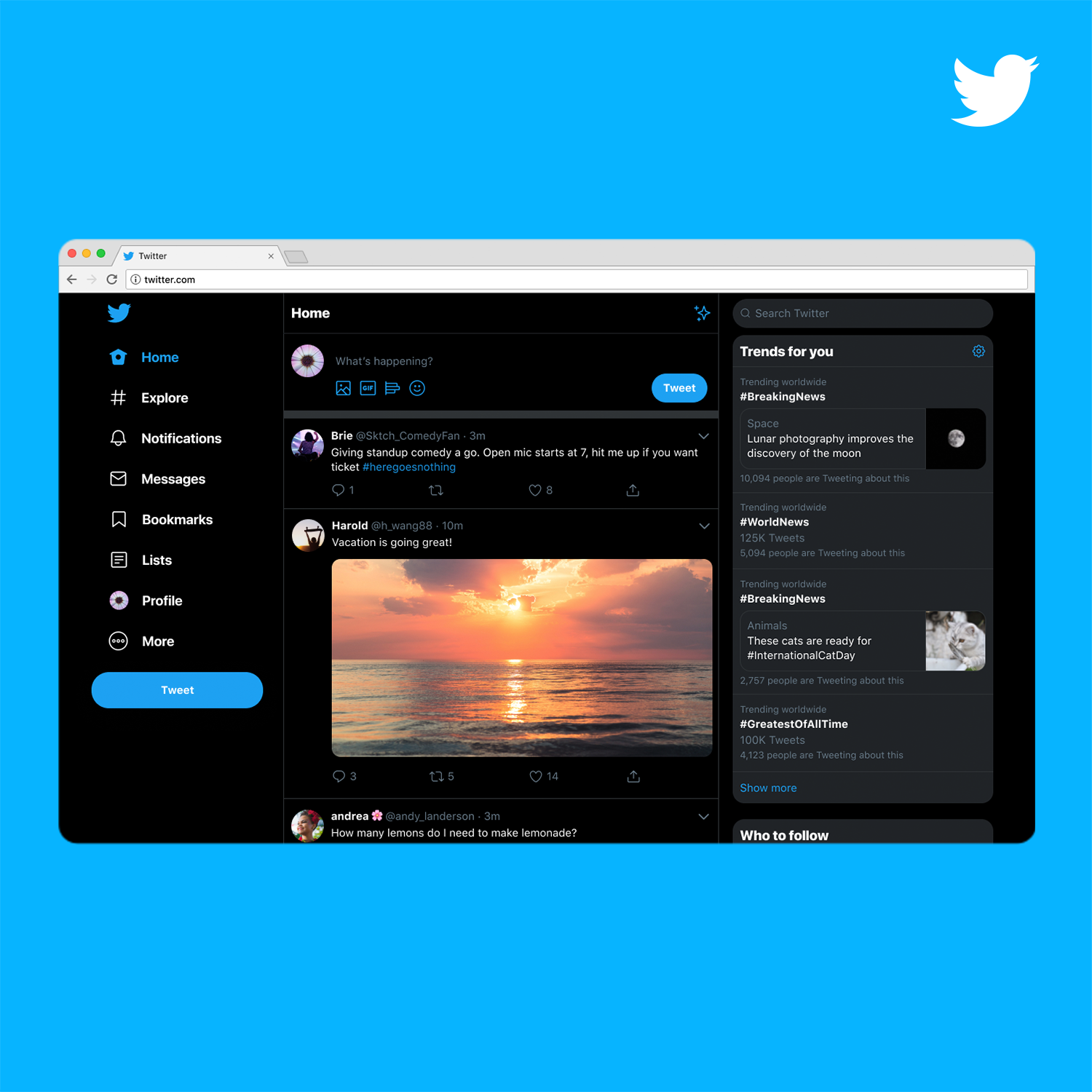Have you ever wondered about how information flows, or perhaps struggles to flow, in different parts of the world? It's a rather interesting question, especially when we consider platforms like X, which many of us use daily to stay connected and informed. For people in Iran, the story of accessing X, formerly known as Twitter, is quite a bit more involved than just opening an app or a website. It's a situation that truly highlights the ongoing push and pull between digital freedom and government control, a topic that, you know, affects how many people learn about what's happening globally.
This platform, X, is actually a place where you can discover the very latest posts and shared information, so it's a very important tool for many. From news that's just breaking to entertainment, sports, political discussions, and even just everyday interests, when something big happens in the world, it often appears on X first. It's a spot where you can, in a way, see all sides of a story, which is why its availability matters so much.
So, the question of whether X is banned in Iran isn't just a simple yes or no. It really opens up a conversation about how people manage to stay in touch with the wider world, even when official doors are closed. It's a pretty complex picture, to be honest, and one that has quite a few layers to it, as we will see.
- Khatrimaza 2025
- Aayusi Jaiswal Web Series
- Bonnie 1000 Challenge
- Lol Superman 911
- Camilla Araujo Sex Videos
Table of Contents
- The Official Stance: Is X Blocked?
- Why the Restrictions?
- How People Get Around the Blocks
- X's Place in Iran's Digital Life
- The Future of X in Iran
- Frequently Asked Questions
The Official Stance: Is X Blocked?
When you ask if X is banned in Iran, the short answer, officially speaking, is yes, it really is. The Iranian government has, for quite some time now, implemented a policy of filtering or blocking access to numerous foreign social media platforms. This includes X, which, as you know, was officially known as Twitter before 2023. So, if you were to try and log in to your X account directly from within Iran using a standard internet connection, you would likely find it quite difficult, perhaps even impossible, to reach the X website or open the X mobile app.
This blocking is part of a broader effort to manage the information that people in the country can access. It's not just X; many other popular international social networking services also face similar restrictions. This means that for someone just trying to sign in to X to check notifications, join conversations, or catch up on posts from people they follow, the experience is actually very different from what someone in, say, America or Europe might encounter. It's a pretty significant barrier, in some respects, for everyday communication and information gathering.
A Look Back: When Did the Block Begin?
The blocking of X, or Twitter as it was then, in Iran actually dates back quite a ways. It began in 2009, following widespread protests after the presidential elections. At that time, Twitter had quickly become a vital tool for activists and ordinary citizens to share information, organize, and communicate with the outside world, so it was seen as a powerful force. The authorities, seeing this rapid spread of information and coordination, moved to restrict access to prevent further organization and control the public narrative. It was, in a way, a direct response to the platform's ability to facilitate real-time updates and discussions.
On this day in 2006, Twitter was launched as a side project that allowed users to send short status updates to groups of friends by texting a single number. Over the next decade, it grew into a massive global platform. Its rapid rise and ability to connect people almost instantly made it a significant concern for governments that prefer to control information flow. So, the decision to block it was, in essence, an attempt to limit the reach of independent news and public discourse, especially during sensitive political periods. It’s a pretty clear example of how digital tools can challenge traditional power structures.
What "Banned" Really Means
When we say X is "banned" in Iran, it's important to understand that this doesn't always mean a complete, absolute shutdown where no one can ever get on. It typically refers to what's called "filtering" or "censorship" at the internet service provider (ISP) level. This means that the official internet gateways into Iran are configured to block connections to specific websites and services, including X. So, while the government aims to prevent access, the reality on the ground is often a bit more nuanced, as you might imagine.
It's not like the internet just stops working; rather, certain parts of it become inaccessible through conventional means. This kind of blocking is often implemented by monitoring internet traffic and then blocking IP addresses or domain names associated with the forbidden services. This creates a situation where, for many ordinary users, simply trying to go to the X website or open the app results in an error message or a page that just won't load. It's a very frustrating experience for those who rely on these platforms for news or connection, to be honest.
Why the Restrictions?
The reasons behind Iran's decision to restrict access to platforms like X are multifaceted, but they largely center around issues of control and national security, as defined by the government. The authorities view these platforms, which are American social media companies, as potential conduits for information that could challenge the state's narrative or even incite unrest. It's a rather common concern for governments that seek to maintain a tight grip on public discourse and social order, so it's not entirely surprising.
They often express worries about foreign influence, the spread of what they consider to be "immoral" content, or the dissemination of what they term "fake news." These concerns, whether stated or implied, form the basis for the strict internet censorship policies that are in place. It's a bit of a balancing act for the authorities, trying to allow some internet access while keeping a very close watch on what people can see and say online, which is quite a challenge for them.
Government Control and Information Flow
One of the primary drivers for blocking platforms like X is the government's desire to control the flow of information within the country. X, as a microblogging and social networking service, allows for very rapid sharing of news and opinions, often bypassing traditional state-controlled media. From breaking news and entertainment to sports, politics, and everyday interests, when it happens in the world, it happens on X first. This speed and breadth of information sharing can be seen as a threat to a system that prefers to manage what its citizens hear and believe.
The government aims to prevent the organization of protests or dissent, and to suppress narratives that contradict its official stance. By restricting access to independent news sources and platforms where citizens can communicate freely, the authorities attempt to shape public opinion and maintain stability. It's a constant effort to, in a way, manage the national conversation, and X's very nature makes it a difficult platform to control without outright blocking it, which is why they took that step.
The Role of Social Movements
X has played a very significant role in social movements and protests globally, and Iran is no exception. During periods of public unrest, the platform has often become a crucial space for activists to share updates, organize demonstrations, and broadcast their messages to both local and international audiences. This ability to facilitate rapid communication and coordination among large groups of people is precisely what makes it a powerful tool for social change, and, consequently, a target for government restrictions.
The authorities recognize X's potential to amplify dissenting voices and to quickly mobilize people. This was evident during the 2009 protests and in subsequent movements, where X served as a key communication channel despite the blocks. So, the ongoing ban is, in some respects, a direct response to the platform's proven capacity to empower social movements and challenge state authority. It's a very clear example of how digital spaces can intersect with real-world political dynamics, creating a bit of a tension.
How People Get Around the Blocks
Despite the official ban, many Iranians still manage to access X and other blocked websites. This is largely achieved through the use of virtual private networks (VPNs) and other circumvention tools. VPNs essentially create a secure, encrypted connection over a public network, allowing users to appear as if they are browsing from a different country where X is not blocked. This makes it possible to bypass the filtering systems put in place by the Iranian authorities, so it's a rather clever workaround.
These tools are widely available, though their reliability can vary as the government continuously tries to detect and block them. It's a bit of a cat-and-mouse game, with users and developers constantly finding new ways to circumvent the blocks, and the authorities responding by trying to close those loopholes. So, while X is officially inaccessible, a significant portion of the tech-savvy population still finds ways to log in to their X accounts, even if it requires a bit of extra effort, which it often does.
The Everyday Reality for Iranians
For many people in Iran, using the internet involves a constant awareness of these restrictions and the need for circumvention tools. Accessing X or other blocked platforms isn't as simple as just going to the website; it often means first connecting to a VPN, which can sometimes slow down internet speeds or be unreliable. This adds a layer of complexity to daily online activities, making what is a simple act for many around the world into a slightly more involved process.
People often rely on word-of-mouth or online communities to find working VPNs and proxies, as the government frequently blocks these tools too. This creates a sort of underground digital economy where access to information becomes a commodity. It's a very real part of daily life for those who wish to stay connected to global conversations, and it shapes how they interact with the internet as a whole, which is pretty impactful.
The Cat-and-Mouse Game
The relationship between Iranian internet users and the authorities is often described as a "cat-and-mouse game." As soon as a new VPN or circumvention method becomes popular, the government's technical teams work to identify and block it. This means that what works one day might not work the next, forcing users to constantly seek out new solutions. It's a rather persistent struggle for digital freedom, with both sides continually adapting their strategies.
This ongoing battle highlights the determination of many Iranians to access unfiltered information and express themselves online, despite the significant obstacles. It also shows the government's persistent efforts to maintain control over the digital sphere. This dynamic creates a constantly shifting landscape for internet access, where staying online and connected requires continuous effort and adaptation, which is quite a lot to deal with, really.
X's Place in Iran's Digital Life
Even with the official ban and the difficulties of access, X still holds a very important place in Iran's digital landscape. Many government officials, politicians, and even religious figures maintain active accounts on X, using them to communicate with the public, share official statements, and engage in international diplomacy. This creates a somewhat ironic situation where the very platform that is blocked for ordinary citizens is openly used by the state's representatives, which is a bit unusual, to be honest.
This dual reality underscores the platform's global significance and its utility even for those who enforce its ban. It also means that, despite the blocks, X continues to be a space where important conversations about Iran, both internal and external, unfold. It's a testament to the platform's enduring influence, even under restrictive conditions, and its role as a key communication channel, you know, for various groups.
News and Information Sharing
Despite the hurdles, X remains a vital source for breaking news and a platform for sharing information for many Iranians. As "My text" states, from breaking news and entertainment to sports, politics, and everyday interests, when it happens in the world, it happens on X first. This means that even with VPNs, people are still trying to get the full story with all the live commentary, seeing all sides of the story, which is quite important to them.
For those who manage to get online, X offers a window into both domestic and international events that might not be covered by state media. It allows users to follow real-time developments, access diverse perspectives, and engage in discussions that are often absent from traditional news outlets. This makes X an indispensable tool for staying informed, especially during times of crisis or significant political events, which is why so many people make the effort to access it.
A Space for Voices
X, with its emphasis on short updates and quick interactions, provides a unique space for individual voices to be heard, even within a restricted environment. Users can quickly and easily post a link using the share button, get updates from someone on X with the follow button, or start a conversation right from their website using the mention button. This functionality allows for a level of public discourse that is often difficult to achieve elsewhere, so it's a pretty valuable outlet.
For many, X is a place to express opinions, share personal experiences, and connect with like-minded individuals, creating a sense of community despite geographical and digital barriers. It serves as a digital town square, where people can engage in conversations, debate ideas, and even organize informal networks. This makes X more than just a news source; it's a platform for human connection and expression, even when it's technically off-limits, which is quite something.
The Future of X in Iran
The future of X's accessibility in Iran remains quite uncertain. There have been occasional discussions within the Iranian government about potentially unblocking certain social media platforms, but these talks have not led to any significant changes so far. The prevailing sentiment among hardliners continues to favor strict control over the internet, viewing it as a matter of national security and cultural integrity. So, any major shift would likely face significant political hurdles, which is a pretty big challenge.
However, the global trend towards greater digital connectivity and the ongoing demand from Iranian citizens for open access could, in some way, put pressure on the authorities to reconsider their policies in the long term. The constant struggle between official bans and citizen circumvention also suggests that a complete and permanent block is virtually impossible to enforce effectively. It's a situation that continues to evolve, and the outcome is, honestly, anyone's guess, as things can change quite quickly.
You can learn more about internet censorship policies on our site, and also find out about the history of digital rights in various regions.
Frequently Asked Questions
Is X blocked in Iran?
Yes, X, formerly known as Twitter, is officially blocked in Iran by government decree. Access to the platform is restricted at the internet service provider level, meaning that standard connections cannot reach the X website or app. However, many people in Iran use circumvention tools like VPNs to bypass these restrictions, so it's not a complete shutdown for everyone, just a very significant barrier.
What social media apps are banned in Iran?
In addition to X, several other major international social media platforms are also banned or heavily restricted in Iran. This list typically includes Facebook, YouTube, and Telegram, among others. The government maintains a policy of filtering content and services that it deems inappropriate or a threat to national security, so it's a pretty extensive list of blocked sites.
How do Iranians access blocked websites?
Iranians commonly access blocked websites and social media platforms by using virtual private networks (VPNs) and proxy servers. These tools encrypt internet traffic and route it through servers located in other countries, making it appear as if the user is browsing from an unrestricted location. While the government actively tries to block these circumvention tools, users and developers constantly find new ways to bypass the restrictions, so it's a continuous effort.
Related Resources:



Detail Author:
- Name : Ms. Joanny Marquardt
- Username : alison.kunde
- Email : orion.collins@yahoo.com
- Birthdate : 1991-10-18
- Address : 43024 Swaniawski Plains Suite 725 West Eulahberg, SC 32866-0890
- Phone : 319.563.7741
- Company : Abshire LLC
- Job : Armored Assault Vehicle Crew Member
- Bio : Accusamus non voluptatibus est. Et et fugit officia. Ut quasi cupiditate ut. Et sed ducimus vel reprehenderit aut aperiam.
Socials
instagram:
- url : https://instagram.com/mortonquitzon
- username : mortonquitzon
- bio : Nihil voluptas et voluptatem numquam fuga aut et. Eum aut perferendis minima provident ab nemo.
- followers : 1267
- following : 1641
tiktok:
- url : https://tiktok.com/@mortonquitzon
- username : mortonquitzon
- bio : Iusto nihil ducimus cupiditate est asperiores autem.
- followers : 3750
- following : 1731
facebook:
- url : https://facebook.com/morton_dev
- username : morton_dev
- bio : Voluptatum voluptate maiores suscipit repellendus sed odit.
- followers : 6977
- following : 2913
linkedin:
- url : https://linkedin.com/in/morton.quitzon
- username : morton.quitzon
- bio : Soluta repudiandae veritatis nemo.
- followers : 575
- following : 114